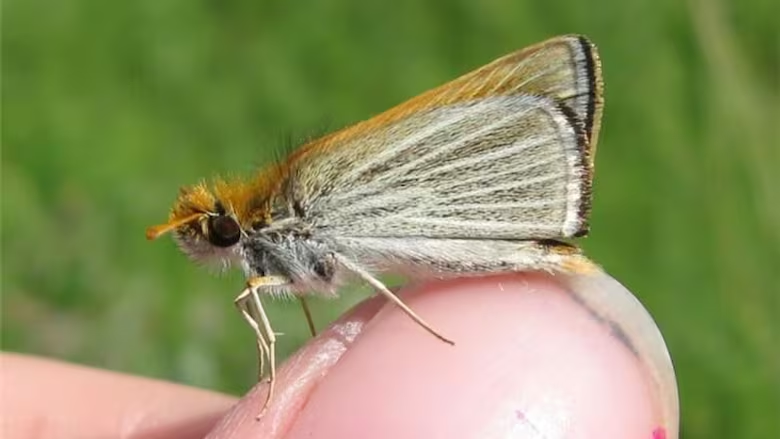'The entire species could become extinct': Crowdfunding underway to save Manitoba butterfly

The rapid decline of a tiny butterfly living in an equally small patch of Manitoba has prompted the Nature Conservancy of Canada to take action in hopes of saving the species from extinction.
Twenty years ago the poweshiek skipperling were so abundant butterfly researchers wouldn't even note them.
But today, there's thought to be fewer than 500 left in the world, and one of the spots the endangered butterflies live in is a patch of tall grass prairie just east of Winnipeg, according to Cary Hamel, a conservation science manager for the Nature Conservancy of Canada (Manitoba region).
In the last 10 years, the decline of the butterfly has happened rapidly, and it has disappeared from North Dakota, Iowa, South Dakota and Michigan. Hamel said habitat loss means there's only small patches of such land left.
"All the patches are isolated from each other so they're living in their own little islands," said Hamel.
The conservancy has launched a crowdfunding campaign through the University of Winnipeg Foundation. The aim is to raise $25,000.
Hamel said half the money will support student research projects on the species. The remainder will help the NCC conserve its habitats, which he suggests isn't easy.
"Almost all the spots where the butterfly lives are on our lands. Tall grass prairie also takes a lot of care to preserve, like prescribed fire, grazing," said Hamel.
More research is needed because there's no "smoking gun" theory as to why the butterfly is becoming extinct, Hamel said, adding there's a good possibility that could happen.
"In Canada it's difficult to get an accurate count but we think there's less than a hundred," he said. There's only one generation hatched each year. According to Hamel, the female lays eggs in July which turn into caterpillars, they spend the winter under the snow and reach adulthood the following July.
"In Canada you worry about them during the winter, because you hope that the caterpillars will overwinter and that there will be enough alive the next year to carry on the species. But one bad thing happens and the entire species could become extinct," Hamel said.
Cross-border captive breeding program underway

As well, for the past seven years, the Assiniboine Park and Minnesota zoos have partnered on a captive breeding program, Hamel said.
Still, the loss of the poweshiek skipperling is no small thing, he added.
"It is just part of Canada's heritage. It's been around for thousands of years, tall grass prairies have been around for thousands of years," Hamel said.
"It's also part of a broader species of cross pollinators that are declining in populations. So we're hoping that what we learn from the poweshiek skipperling might inform how we approach conserving other species of pollinators."